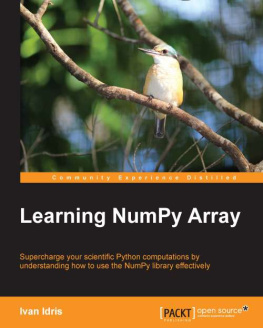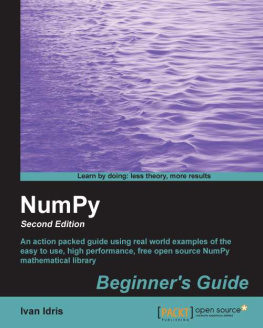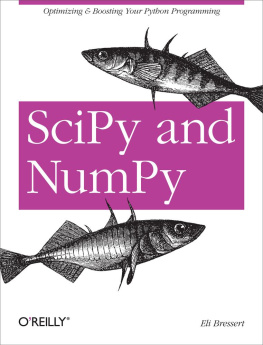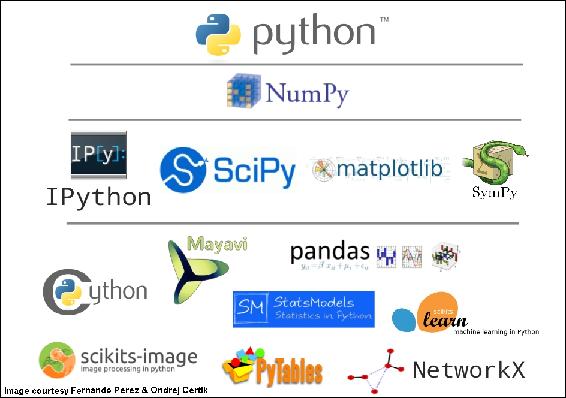Liang-Hua Chin - Numpy Essentials
Here you can read online Liang-Hua Chin - Numpy Essentials full text of the book (entire story) in english for free. Download pdf and epub, get meaning, cover and reviews about this ebook. year: 2016, publisher: Packt Publishing, genre: Computer. Description of the work, (preface) as well as reviews are available. Best literature library LitArk.com created for fans of good reading and offers a wide selection of genres:
Romance novel
Science fiction
Adventure
Detective
Science
History
Home and family
Prose
Art
Politics
Computer
Non-fiction
Religion
Business
Children
Humor
Choose a favorite category and find really read worthwhile books. Enjoy immersion in the world of imagination, feel the emotions of the characters or learn something new for yourself, make an fascinating discovery.
- Book:Numpy Essentials
- Author:
- Publisher:Packt Publishing
- Genre:
- Year:2016
- Rating:3 / 5
- Favourites:Add to favourites
- Your mark:
Numpy Essentials: summary, description and annotation
We offer to read an annotation, description, summary or preface (depends on what the author of the book "Numpy Essentials" wrote himself). If you haven't found the necessary information about the book — write in the comments, we will try to find it.
- Optimize your Python scripts with powerful NumPy modules
- Explore the vast opportunities to build outstanding scientific/ analytical modules by yourself
- Packed with rich examples to help you master NumPy arrays and universal functions
In todays world of science and technology, its all about speed and flexibility. When it comes to scientific computing, NumPy tops the list. NumPy gives you both the speed and high productivity you need.
This book will walk you through NumPy using clear, step-by-step examples and just the right amount of theory. We will guide you through wider applications of NumPy in scientific computing and will then focus on the fundamentals of NumPy, including array objects, functions, and matrices, each of them explained with practical examples.
You will then learn about different NumPy modules while performing mathematical operations such as calculating the Fourier Transform; solving linear systems of equations, interpolation, extrapolation, regression, and curve fitting; and evaluating integrals and derivatives. We will also introduce you to using Cython with NumPy arrays and writing extension modules for NumPy code using the C API. This book will give you exposure to the vast NumPy library and help you build efficient, high-speed programs using a wide range of mathematical features.
What you will learn- Manipulate the key attributes and universal functions of NumPy
- Utilize matrix and mathematical computation using linear algebra modules
- Implement regression and curve fitting for models
- Perform time frequency / spectral density analysis using the Fourier Transform modules
- Collate with the distutils and setuptools modules used by other Python libraries
- Establish Cython with NumPy arrays
- Write extension modules for NumPy code using the C API
- Build sophisticated data structures using NumPy array with libraries such as Panda and Scikits
Leo (Liang-Huan) Chin is a data engineer with more than 5 years of experience in the field of Python. He works for Gogoro smart scooter, Taiwan, where his job entails discovering new and interesting biking patterns . His previous work experience includes ESRI, California, USA, which focused on spatial-temporal data mining. He loves data, analytics, and the stories behind data and analytics. He received an MA degree of GIS in geography from State University of New York, Buffalo. When Leo isnt glued to a computer screen, he spends time on photography, traveling, and exploring some awesome restaurants across the world. You can reach Leo at http://chinleock.github.io/portfolio/.
Tanmay Dutta is a seasoned programmer with expertise in programming languages such as Python, Erlang, C++, Haskell, and F#. He has extensive experience in developing numerical libraries and frameworks for investment banking businesses. He was also instrumental in the design and development of a risk framework in Python (pandas, NumPy, and Django) for a wealth fund in Singapore. Tanmay has a masters degree in financial engineering from Nanyang Technological University, Singapore, and a certification in computational finance from Tepper Business School, Carnegie Mellon University.
Table of Contents- An Introduction to NumPy
- The NumPy ndarray Object
- Using NumPy Arrays
- NumPy Core and Libs Submodules
- Linear Algebra in NumPy
- Fourier Analysis in NumPy
- Building and Distributing NumPy Code
- Speeding Up NumPy with Cython
- Introduction to the NumPy C-API
- Further Reading
**
Liang-Hua Chin: author's other books
Who wrote Numpy Essentials? Find out the surname, the name of the author of the book and a list of all author's works by series.



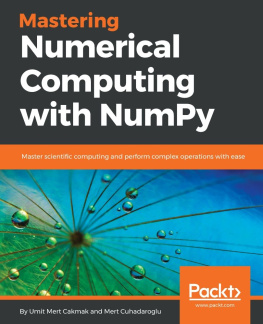
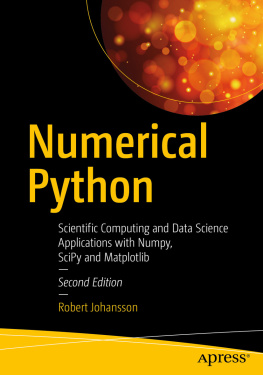
![Eli Bressert [Eli Bressert] - SciPy and NumPy](/uploads/posts/book/119331/thumbs/eli-bressert-eli-bressert-scipy-and-numpy.jpg)
![Ivan Idris [Ivan Idris] - NumPy: Beginner’s Guide - Third Edition](/uploads/posts/book/119330/thumbs/ivan-idris-ivan-idris-numpy-beginner-s-guide.jpg)
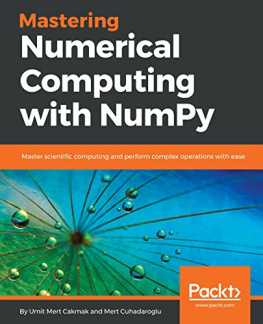
![Ivan Idris [Ivan Idris] - NumPy Cookbook - Second Edition](/uploads/posts/book/119328/thumbs/ivan-idris-ivan-idris-numpy-cookbook-second.jpg)
